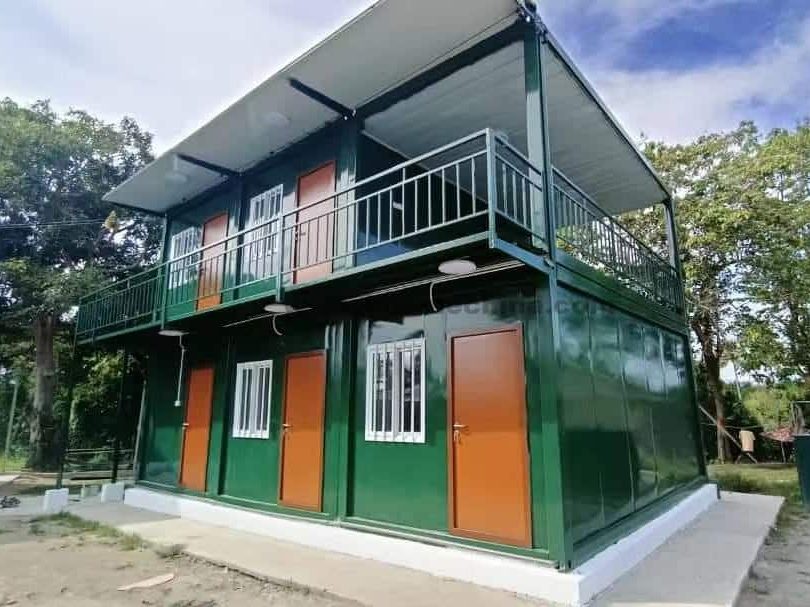How to build a container house in Malaysia
Building a container house in Malaysia involves several steps, from planning and design to construction and compliance with local regulations. Here's a comprehensive guide to help you through the process:

1.Research and Planning:
● Research local building codes and regulations for container homes in Malaysia.
● Define your requirements, including the number of containers, layout, and design preferences.
● Consider the climate and environmental conditions of the chosen site.
2.Site Selection:
● Choose a suitable location that complies with zoning regulations and has access to necessary utilities.
● Conduct a site analysis to assess soil conditions and potential challenges.
3.Design Phase:
● Engage with an architect or designer experienced in container home construction.
● Create detailed architectural drawings considering your layout preferences, aesthetics, and local building codes.
● Incorporate insulation, ventilation, and other climate-specific features.
4.Permits and Approvals:
● Obtain necessary permits from local authorities.
● Ensure that your design complies with local building codes and regulations.
5.Foundation:
● Select an appropriate foundation type based on soil conditions.
● Options include concrete piers, a traditional foundation, or a hybrid foundation system.
6.Container Selection:
● Choose containers based on your design and space requirements.
● Consider factors such as size, condition, and modifications needed.
7.Modifications:
● Plan and execute necessary modifications, including cutting openings for windows and doors.
● Reinforce structural elements as needed.
8.Insulation:
● Install insulation to regulate temperature and address the tropical climate.
● Consider materials suitable for high temperatures and humidity.
9.Windows and Doors:
● Install energy-efficient windows and doors.
● Ensure proper sealing to prevent leaks.
10.Utilities:
● Plan for plumbing, electrical wiring, and HVAC systems.
● Choose energy-efficient appliances and fixtures.
● Consider sustainable energy options, such as solar panels.
11.Interior Finishes:
● Finish the interior according to your preferences and needs.
● Use materials that are both aesthetically pleasing and functional.
12.Exterior Finishes:
● Choose appropriate cladding or finishing materials.
● Consider weather-resistant and low-maintenance options.
13.Safety Measures:
● Ensure structural integrity and compliance with safety standards.
● Install smoke detectors and fire extinguishers as required.
14.Waste Management:
● Implement proper waste disposal and recycling systems.
15.Final Inspections:
● Schedule inspections with local authorities to ensure compliance with regulations.
● Address any concerns or recommendations from inspectors.
16.Community Engagement:
● Communicate with neighbors and the local community about your project.
● Address any concerns and ensure community acceptance.
17.Occupancy:
● Once all inspections are passed, you can move into your container house.
It's crucial to work with professionals, including architects, engineers, and contractors, throughout the process. Additionally, maintaining open communication with local authorities and the community can contribute to a smoother construction process. Keep in mind that each step may have unique considerations based on your specific location and project requirements.